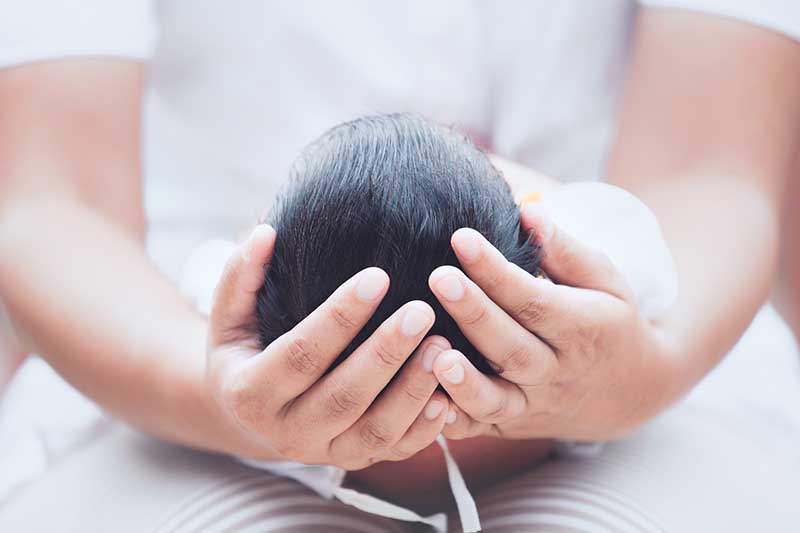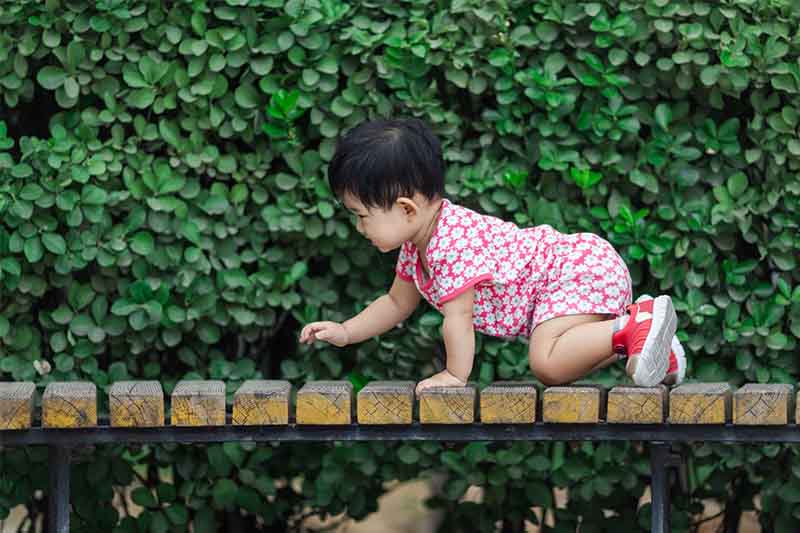Families For Life | Preventing Falls for Babies and Toddlers-Newborn

DID YOU KNOW?
Cradle cap is the oily, scaly crust that babies sometimes get on their scalps, in their body folds and on their torsos. Although cradle cap looks uncomfortable, it doesn’t usually bother your baby.
READ MORE

You might have noticed how easily babies and children can fall. Falls prevention is about watching your child’s development and adjusting your child’s home and play environment as he grows.
About falls and falls prevention
Falls are the most common cause of injuries in every age group. As babies and children start moving around more, they’re more likely to have falls and bumps.
Injuries to children often happen when you don’t expect it, because children grow and develop new skills so quickly.
The best thing you can do to keep your child safe is to monitor the new skills she’s learning, and the new places she can reach and get to – and then adjust your environment to suit.
Falls are part of the normal growing process. Most falls lead only to bumps and bruises, but they can sometimes lead to a trip to a doctor or the hospital.
Bathroom: preventing falls
The bath is a very slippery place, and even adults can fall quite easily. Here are ways to minimise the risks:
Always keep your child within arm’s reach.
Encourage your child to stay sitting down in the bath.
Use a non-slip bath mat in the bath if your bath doesn’t have a non-slip surface.
Bedroom: preventing falls
In the bedroom, remove toys from the cot so your child can’t use them to climb on and then fall out of the cot.
Note that only children aged over 9 years should use bunk beds. The top bunk should have a safety rail.
It’s handy to use a night light. This helps to prevent falls if your child gets out of bed at night.
Move, put away or lock up anything that might be unsafe for your child to climb or that your child can use to get to unsafe places.
Furniture: preventing falls
Bouncers
If you use a bouncer for your baby, always put it on the floor when your baby is in it. Don’t put it on a table top or anywhere else above floor level. An active baby might move a bouncer and make it fall off a table top.
Change tables or beds
As your baby grows, you might not even know they can roll over or slide down things until they roll or fall off a change table or bed or another piece of furniture.
If your baby is on a surface like a change table or bed, always keep a hand on your baby. Also make sure that change tables have raised sides that are at least 100 mm higher than the changing surface.
But it’s safest to change your baby on the floor.
Highchairs
At home and when you’re out and about, prevent falls from high chairs by always using the chair’s 5-point harness.
Other furniture
As your child grows, keep furniture away from other objects in the room. This will stop your child climbing from one piece to another or climbing up high on shelving. Put the things your child wants to reach down low so they’re less tempted to try climbing up the furniture.
As a last resort, you can move furniture to a part of the house your child doesn’t use, or put a secure barrier in place so they can’t get to it.
Out and about: preventing falls
If you’re shopping, make sure you use the 5-point harness in prams, strollers and supermarket trolleys. If a supermarket trolley doesn’t have a 5-point harness, use your pram or stroller instead, or consider using a baby carrier or sling.
And always supervise your child when you’re at playgrounds. Falls from playground equipment can lead to injuries like fractures and dislocations.
Steps an stairs: preventing falls
Once your baby can crawl, it’ll be hard to keep baby away from steps and stairs.
Install safety gates at the top and bottom of stairs, and keep them in place until your child is very good at walking up and down stairs independently. And always open the gate rather than stepping over it. Opening the gate sets a good example for children and reduces your own risk of tripping.
Trip hazards: preventing falls
Look for trip hazards on the floor and remove them. For example:
Pick up electrical cords.
Put away toys at the end of the day so all family members can go to the toilet at night without tripping over them.
Wipe up spills as soon as they happen – they can make the floor slippery.
Use anti-skid mats under your rugs and floor coverings, or roll rugs away.
Things that influence injuries from falls
There are 3 important things that can influence the seriousness of a fall:
The height children fall from: the lower the height, the lower the danger. Children under 5 years shouldn’t have access to heights over 1.5 m, and older children shouldn’t have access to heights over 2 m.
The surface children might fall onto: hard surfaces like concrete, ceramic tiles and even compacted sand are more hazardous to fall onto than softer surfaces. A bed of tan-bark or pine mulch under play equipment provides a softer landing. These beds must be at least 30 cm deep.
The things children might hit as they fall: put sharp-edged furniture like coffee tables and bedside tables in areas where children are unlikely to fall on them. You can also use corner protectors on the edges.
© raisingchildren.net.au, translated and adapted with permission
Explore more